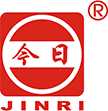What Is the Lifespan of PP Stationery?
Polypropylene, or PP, is one of the most durable and widely used materials in the stationery industry. Its flexibility, chemical resistance, and cost-effectiveness make it ideal for producing files, folders, document holders, and other office essentials. Understanding the lifespan of PP stationery helps users and buyers make informed decisions about quality, durability, and value.
Material Longevity of Polypropylene
PP is a thermoplastic polymer known for its excellent mechanical and chemical stability. Under normal office or classroom conditions, PP stationery products such as file folders and document boxes can last 5 to 10 years or even longer. This durability is due to the material’s strong resistance to moisture, mild acids, and UV exposure. Unlike paper-based or PVC materials, PP does not easily crack, fade, or become brittle over time, which allows it to maintain its original appearance and performance for many years.
When stored in a dry environment and used for normal handling, PP stationery maintains its color and elasticity. However, exposure to extreme heat or direct sunlight can accelerate aging, slightly reducing its service life.
Factors Influencing PP Stationery Lifespan
1. Material Thickness
The thickness of PP sheets directly affects their longevity. Stationery made with 0.8mm–1.2mm PP sheets can endure frequent bending and pressure without tearing. In contrast, thinner sheets of 0.5mm or less may wear faster when used for heavy document storage.
2. Manufacturing Quality
High-quality PP stationery from professional manufacturers like JINRI is produced using precision molding and smooth edges that prevent cracks during repeated use. Injection-molded PP components with consistent density ensure better structural integrity and a longer life cycle compared to lower-grade extruded materials.
3. Usage Frequency
Items used daily, such as expanding file folders or document trays, face more friction and pressure. Regular cleaning and proper handling can minimize wear and keep the product functional for many years. Light-use items, such as presentation covers, usually retain their form for over a decade.
4. Storage Environment
Humidity, sunlight, and temperature play a significant role. PP materials resist moisture but can soften under continuous high temperatures above 100°C. When stored in environments below 60% humidity and away from UV exposure, PP stationery retains its clarity and shape for much longer.
5. Additives and Coatings
Some PP stationery includes UV-resistant or anti-scratch coatings. These additives enhance aging resistance, preventing color fading and surface degradation. Products treated with antioxidants can resist yellowing even after 8–10 years of continuous use.
Durability Comparison Table
| Material Type | Typical Lifespan | Water Resistance | UV Resistance | Maintenance Level |
|---|---|---|---|---|
| PP (Polypropylene) | 5–10 years | Excellent | Moderate | Low |
| PVC | 3–5 years | Good | Poor | Medium |
| Paperboard | 1–2 years | Weak | Poor | High |
| PET | 7–10 years | Excellent | High | Low |
This comparison highlights PP as one of the most balanced materials in terms of cost and lifespan, making it ideal for both personal and professional stationery.
Sustainable Advantages of PP Stationery
PP’s long service life contributes to sustainability by reducing waste and replacement frequency. As a 100% recyclable plastic, it can be reprocessed into new stationery items or packaging products, minimizing environmental impact. Manufacturers such as JINRI prioritize eco-friendly production processes, ensuring their PP stationery aligns with international environmental standards. This durability and recyclability combination supports both user convenience and global sustainability goals.
Maintenance Tips to Extend Lifespan
Avoid High Heat: Keep PP stationery away from direct sunlight or near hot equipment to prevent warping.
Clean with Mild Solutions: Wipe with soft cloths and mild soap water; avoid alcohol or strong solvents.
Organize Properly: Do not overload files or folders; excess weight may cause deformation.
Store in a Cool, Dry Place: Maintain consistent temperature and humidity to preserve flexibility and transparency.
Rotate Use: Alternate between different folders or holders to distribute wear evenly.
Following these steps can extend the functional life of PP stationery to over a decade, maintaining clarity and smooth operation.
Conclusion
The lifespan of PP stationery is influenced by several factors including material quality, usage habits, and environmental conditions. With regular maintenance and mindful use, most PP stationery can reliably serve users for 5–10 years or more, far outlasting paper or PVC alternatives. For organizations seeking long-lasting, environmentally conscious, and cost-effective stationery products, JINRI offers a professional range of PP solutions designed for durability, practicality, and sustainability in both office and educational environments.



